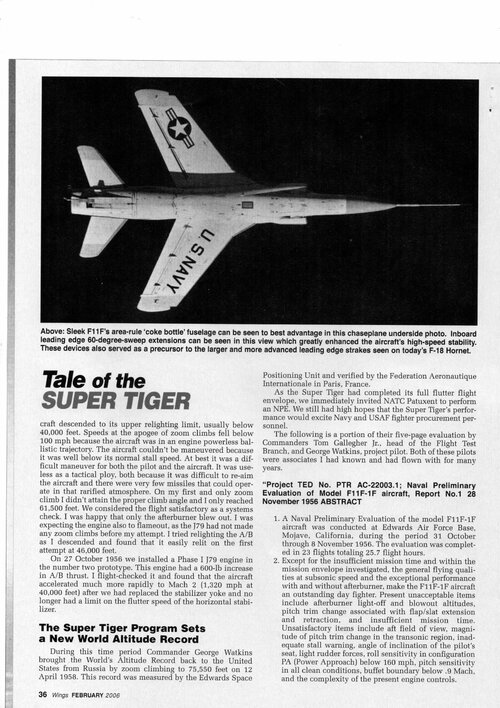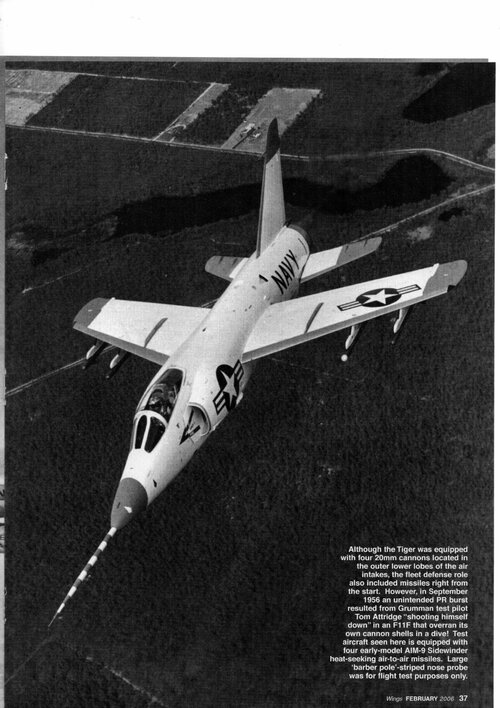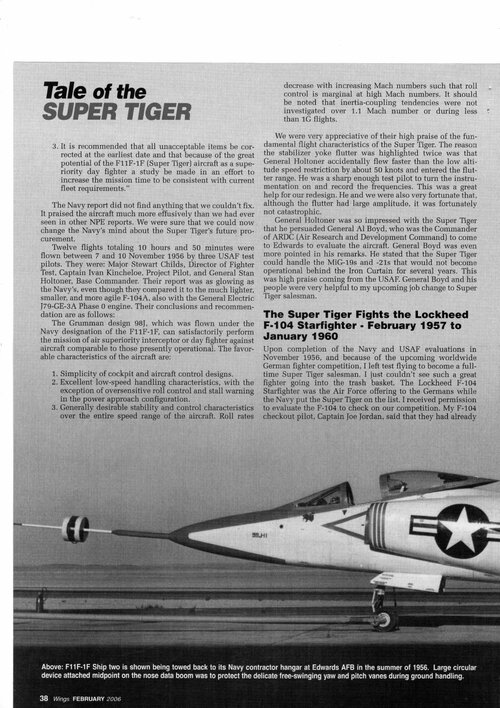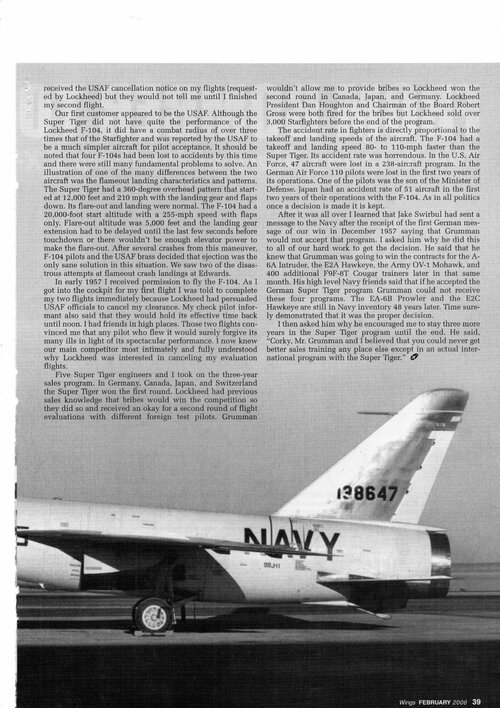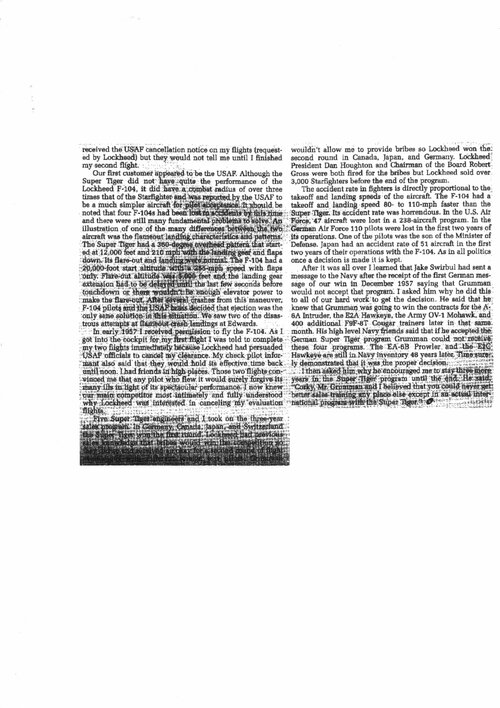You are using an out of date browser. It may not display this or other websites correctly.
You should upgrade or use an alternative browser.
You should upgrade or use an alternative browser.
Grumman XF11F-2 Super Tiger
- Thread starter Pioneer
- Start date
BlackBat242
OK, I changed my personal text ;)
- Joined
- 10 April 2013
- Messages
- 1,482
- Reaction score
- 4,290
Thank you very much.
- Joined
- 22 April 2012
- Messages
- 2,258
- Reaction score
- 2,309
Never heard of that before... what was the context (for which nation, and when)?
This was reported in the trade press in 1958, specifically that Grumman were offering the F11F-1 with the RA.24, with the RB.133 as an option for later aircraft, to the Luftwaffe. It was reported in Aviation Daily first and then picked up by other publications such as Flight. The German publication Der Flieger also reported it.
Ronald Harker, was Rolls Royce's Military Adviser from 1957, states in his 1979 book The Engines Were Rolls-Royce: An Informal History of that Famous Company that:
Corky Meyer of Grumman and I tried our best to sell the Grumman F-11-F Tiger with the Avon engine but we were no match for the Lockheed team, who had their top directors and lots of finance available to back their submission; the hotel in Bonn was nicknamed the "Lockheedshoff".
Similar threads
-
-
-
Grumman / Shin Meiwa PX-2 Flying boat.
- Started by Pioneer
- Replies: 5
-
Skylancers for the Marine Corps; Super Tigers for... the CIA (U-2 cover)
- Started by Archibald
- Replies: 23
-
What If? game - the F11F-2 and F8U-3 replace the F-104 and F-4 in history.
- Started by apparition13
- Replies: 54

